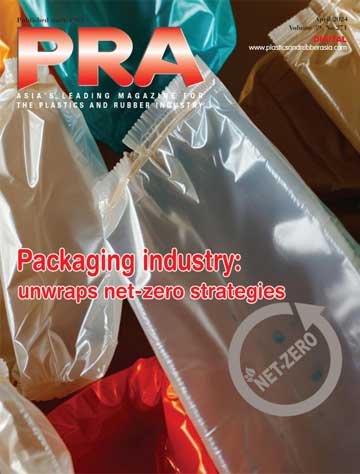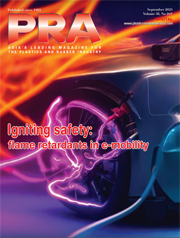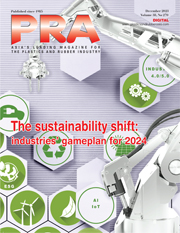Packaging: Consumers cancelling culture of unsustainability
The sustainability agenda has evolved significantly, becoming an integral aspect of the ethos embraced by the environmentally conscious younger generation who are driving the trends in sustainable packaging, says Angelica Buan in this report.
Driving sustainable packaging trends
Decarbonisation transcends boundaries of geography, gender, and age, especially in today's fiercely competitive market, where companies vie for a larger share of the consumer pie, sustainability is increasingly seen through the eyes of young consumers. Understanding the buying patterns of this demographic is crucial for producers aiming to thrive in the contemporary market landscape. Young consumers, known for their tech-savviness, eco-consciousness, and quest for authenticity, possess distinct purchasing habits.
Based on estimates depicted on Credit Suisse’s ESG report, “Treeprint: when emissions turn personal”, young consumers aged between 16-40 years represent 54% of the world’s population; and their share in total global consumer spending is set to rise from 48% in 2020 to 69% by 2040.
One thing is certain: this segment is drawn to brands that align with their values, prioritise meaningful experiences over mere materialism, and exhibit a strong commitment to sustainability. Thus, for brands to get a big share of the market, they must connect with young consumers.
Less carbon footprint through lifestyle choices
For many young consumers, lifestyle choices mirror commitment to sustainability. And the remarkable consumer power held by this demographic cannot be overlooked.
A 2022 report by Credit Suisse titled, "The Young Consumer and a Path to Sustainability", which covered ten countries, including five developed nations (US, UK, Germany, France, and Switzerland), and five in the developing world (China, India, Brazil, Mexico, and South Africa), revealed eye-opening insights. Together, these countries represent nearly 60% of global GDP. It is no surprise that sustainable packaging holds strong appeal for young consumers, given their increasing concern for environmental issues and preference for eco-friendly options.
Brands that offer sustainable packaging not only align with the values of young consumers but also bolster their brand image, fostering loyalty and long-term engagement.
Plastic packaging shift to sustainability
The packaging industry's shift towards sustainability, especially through the use of recyclable plastics and other eco-friendly materials, is not only changing the way products are packaged but also reshaping consumer preferences worldwide.
According to a 2020 McKinsey Sustainability in Packaging report, over half of US consumers expressed concerns about the environmental impact of packaging, encompassing various issues beyond just marine litter.
Furthermore, consumers are willing to pay extra for eco-friendly products, more sustainably packaged options, given they are accessible and well-labelled. Moving forward, they express nearly equal interest in recyclable and recycled plastic packaging, along with fibre-based alternatives, as viable solutions.
These findings are echoed in Trivium Packaging's 2023 Buying Green Report, which bared a notable rise in demand for sustainable packaging, signalling a growing trend among environmentally- conscious consumers.
It found that despite inflation-driven price hikes, consumers show willingness to invest more in sustainable packaging. Overall, 82% of respondents are willing to pay more for sustainable packaging, a four-point increase from 2022 and eight points since 2021. Notably, 90% of younger consumers aged 18-24 showed a strong inclination towards investing in sustainable packaging options.
Regarding sustainable packaging preferences, 71% of consumers are found to choose products based on packaging sustainability. Interest in sustainable packaging has risen since 2022, especially among younger demographics and high-income earners. However, 59% of consumers look for recycling and sustainability information on labels, while 46% find unclear labeling to be a significant purchasing barrier.
Age matters: in sustainable packaging
The transition towards sustainable packaging is resonating with consumers across all age groups, from millennials to baby boomers, indicating a pervasive and lasting trend.
The 2024 Sustainability and Convenience in Packaging Survey, conducted for Austrian plastics packaging provider Alpla in partnership with US consumer survey firm Pollfish touched on the issue of age in sustainable preferences - specifically, whether a generational gap exists in the adoption of sustainable and eco-friendly packaging.
The results of the survey showed that respondents' perspectives on sustainability efforts differ among age groups. However, while older individuals typically prioritise convenience over sustainability to a greater extent, younger consumers showed a stronger preference for sustainable options, with 54% of those aged 18-34 frequently choosing sustainably packaged products.
Similarly, younger consumers are inclined to travel extensively and pay extra for eco-friendly packaging, as indicated by the report. Furthermore, they are significantly influenced by the sustainable shopping habits of their peers, suggesting a potential ripple effect of such behaviour within this demographic.
Recyclable PE packaging

With an eye towards helping converters create packaging that can be more easily mechanically recycled than conventional polyolefin shrink film (POF) solutions, China’s Shantou Mingca Packaging Co and ExxonMobil Asia Pacific Research & Development Co (ExxonMobil) have developed an innovative double bubble polyethylene-based shrink film (PEF) solution.
The so-called next generation of POF has been created using ultra-low density Exceed XP performance PE. The PEF can be used to package products in a variety of shapes, such as electronics, household and personal care products, medicines, food, books and magazines, plastic utensils, and toys.
The firms say the recyclability of the film structure has been third party validated and certified by TÜV Rheinland.
PEF shrink film can help provide exceptional “shelf appeal” to products, making them look attractive to consumers. In addition, the PEF solution can provide a snug-fit with small and soft corners, further increasing appearance aesthetics.
It can shrink more than 70% upon heating and can help enable shrink performance at lower temperatures.
Thanks also to its low-temperature shrinkage capability, the new PEF solution can offer potential cost savings due to the shrink tunnel consuming less energy than what is needed with conventional POF solutions. Similar to POF, the new PEF shrink film can be produced using double bubble technology. Converters can typically switch from their current POF formulation to the next generation conveniently with only a few adjustments to their existing POF production line, while brand owners can adopt the new solution without upgrades or changes to their packaging lines, add the firms.
(PRA)SUBSCRIBE to Get the Latest Updates from PRA Click Here»





